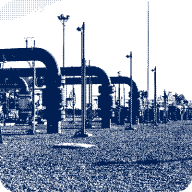
Hydrogen corridor Building the European hydrogen backbone
The European Union has set a prime goal to make Europe the first climate-neutral continent. As part of the European Green Deal adopted in 2020, the EU defined a roadmap to become carbon neutral by 2050. The transition to renewable energy is a major component of this ambition.
In July 2021, the EU set an intermediate objective of reducing the Union’s net greenhouse gas emissions by 55% before the end of 2030. This comes as part of the Fit for 55 package , a set of proposals to revise and update EU legislation as well as implement new initiatives to support these climate goals.
At the same time, the current geopolitical context is reinforcing the need for stronger energy self-sufficiency in Europe, prompting the adoption in 2022 of the REPowerEU Plan, a European roadmap to increase energy sovereignty and accelerate the energy transition.
To achieve these high-level objectives, the REPowerEU Plan introduced the goal of developing 10 million tonnes of domestic renewable hydrogen production and 10 million tons of renewable hydrogen imports by 2030. This prompted the development of several hydrogen infrastructure projects, to carry affordable clean hydrogen from the areas of production in the South region (mainly from solar resources) or the Nordic region (from offshore wind farms) to the main areas of consumption in Northwest Europe. These hydrogen corridors, such as H2med, are also considered within the European Hydrogen Backbone (EHB). This initiative brings together over 30 energy infrastructure operators, sharing one same vision of a climate-neutral Europe. The EHB participants aim to create a competitive, liquid, pan-European renewable and low-carbon hydrogen market. A major component of the European Hydrogen Backbone, the H2med corridor alone will make it possible to secure Europe’s energy supply by transporting around 10% of the total hydrogen consumption forecast for Europe by 2030. Of the 20 million tons of hydrogen expected to be consumed annually in Europe in 2030, this corridor will be able to transport 2 million tons.
Connecting national hydrogen backbones

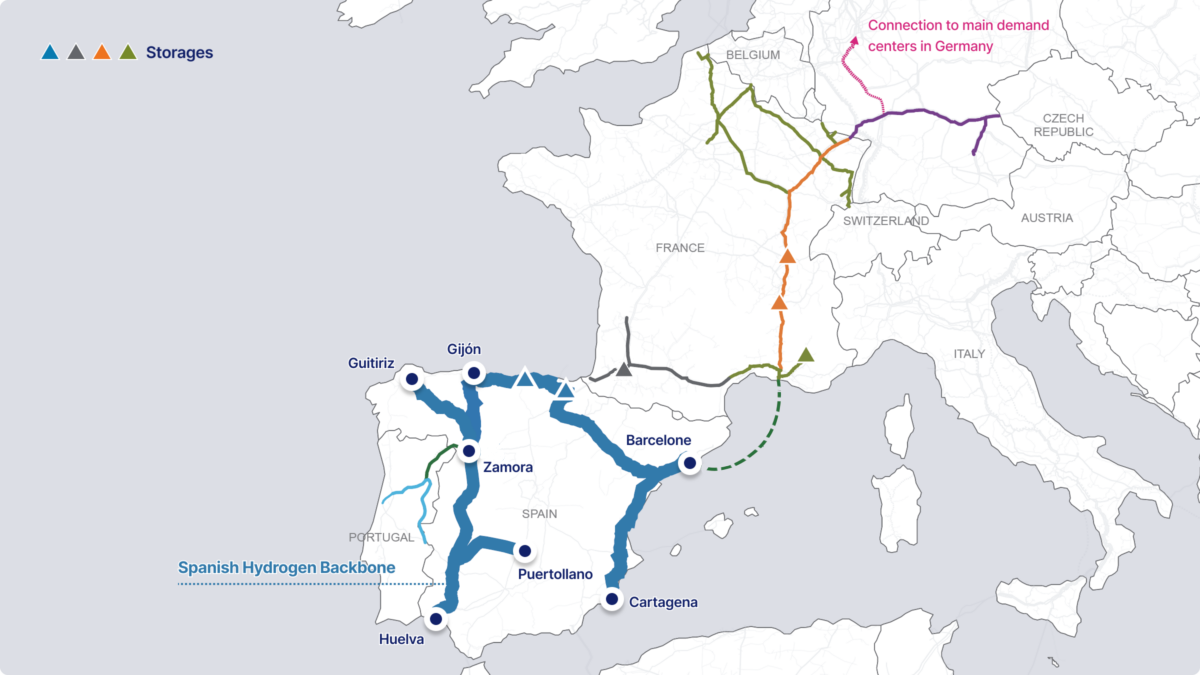
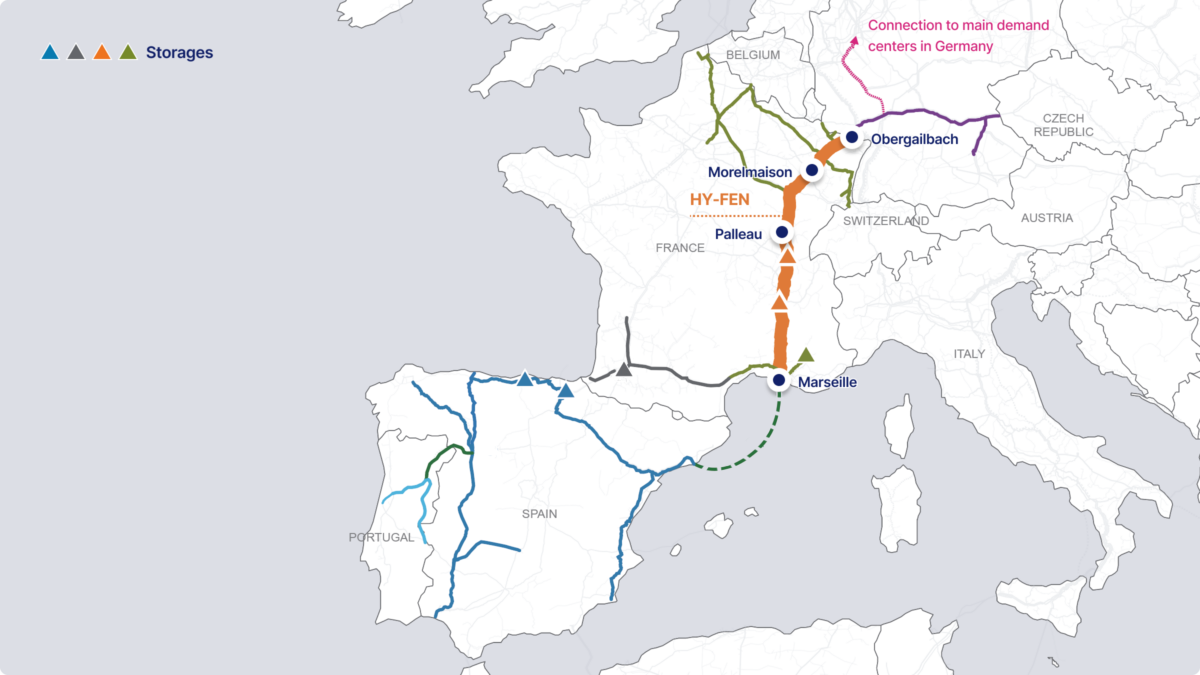

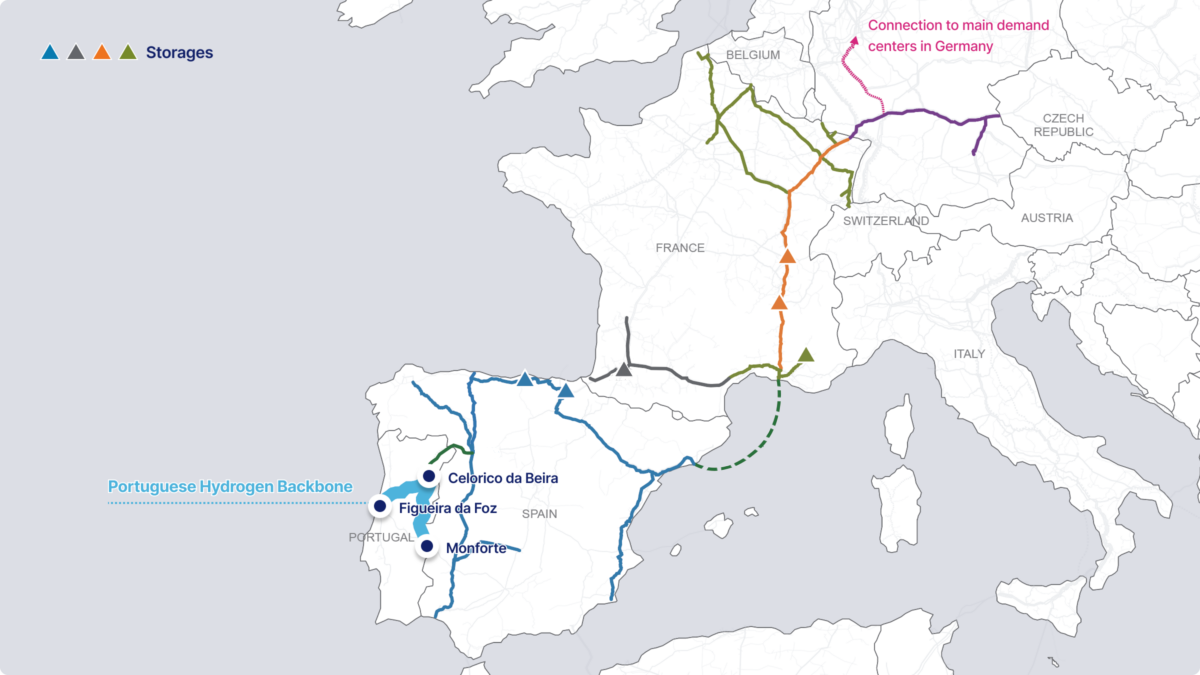
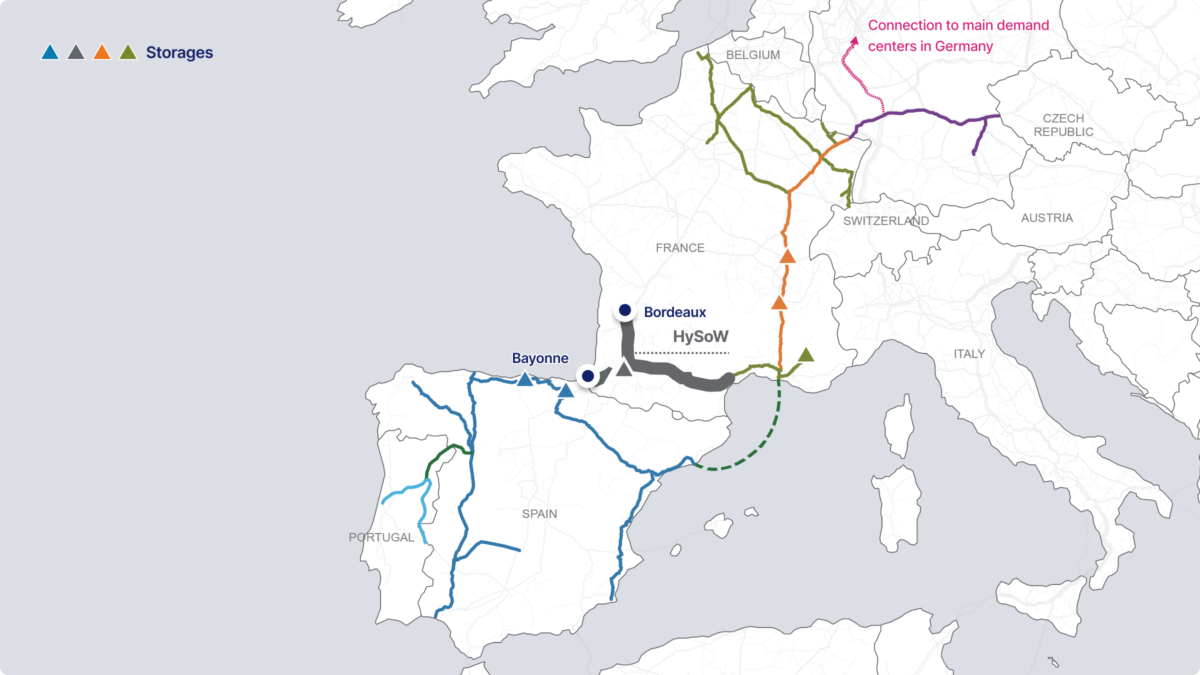
Portugal, Spain, France and Germany each have defined an agenda towards climate neutrality and to support this objective they have developed ambitious hydrogen strategies.
The TSOs participating in the H2med project are aiming to build strong national backbones of hydrogen storage and transmission infrastructures. These national backbones will be able to link consumption and production areas covering each country’s own future needs and export surplus capacities to neighbouring European nations. These hydrogen infrastructures are key to scale up the hydrogen market, accelerate its deployment in Europe and increase its competitiveness rapidly.
By connecting the local hydrogen backbones all five H2med project members are aiming to complete by 2030, H2med will create a clean energy corridor from the Southwest to the Northwest of Europe.
Enagás: positioning Spain as the first renewable hydrogen hub in Europe
Enagás aims to develop a core hydrogen network that will span across the main production and consumption hubs in the country by 2030, as well as two underground storage reservoirs in the North of Spain. The network will include both existing pipelines (the company has already identified 30% of the Spanish gas network to be converted into hydrogen pipelines) as well as new pipelines and storage capacities, with expected investments up to €4.67 billion.
NaTran: connecting Spain and Germany
NaTran is spearheading the development of HY-FEN, an ambitious hydrogen transport system in France, to extend from Marseille to the German border. This key strategic project will connect the abundant hydrogen production in the Iberian Peninsula with the main consumption and storage sectors in France’s Rhone Valley, and into Germany. HY-FEN will link with existing projects like BarMar in Marseille and H2ercules in Germany and will reach into the Benelux and Central Europe regions, as well as tying in with the Franco-Belgian corridor close to the North Sea’s developing hydrogen hub. The network’s 1,200 kilometers are engineered to support the transportation of up to 2 million tons of hydrogen each year.
OGE: decarbonizing the German economy with the H₂ercules project
As Germany’s largest TSO, OGE is a key enabler for the country’s CO2 compliance strategy. The development of a hydrogen infrastructure is a crucial building block for the decarbonization of Germany and the diversification of its energy supply. To accelerate this important process, OGE developed the national infrastructure project “H₂ercules”, which will supply consumers in the south and west of Germany with hydrogen from domestic production and via import routes.
The H2ercules network will comprise more than 2,000 km of pipelines by 2030. Along with additional pipelines in the Ruhr area, connections to Norway and to the Netherlands, OGE will also have developed import options from France and the Czech Republic. The network will then represent an H2 backbone in the west and south of Germany, reaching important centers of consumption.
REN: implementing an advanced carbon-free energy strategy
Portugal is engaged in a voluntary clean energy strategy, with a goal to generate 80% of the country’s electricity requirements using renewable sources before the end of this decade. Huge wind and solar programs are underway, and hydrogen will be a central component to balance green energy production and consumption requirements. This is why Portugal plans to build the Portuguese section of CelZa as well as create a national hydrogen grid able to deliver 0.75 MPTA of export hydrogen through H2med.
Teréga: Mapping South-West France with the HySoW project
Hydrogen South West (HySoW), this is the name of a 600 km infrastructure project driven by Teréga that aims to create a backbone of renewable hydrogen storage and transport infrastructure by 2030. The infrastructure will run from the Atlantic coastline to the Mediterranean Sea, interconnecting and decarbonising the major industrial hubs in Bordeaux, Lacq, Toulouse and Port-la-Nouvelle, also joining the HY-FEN and the BarMar project in the East and later the Spanish network in the West. HySoW will be a €1.2 billion investment, delivering 0.5 MPTA.
What’s on the news ?
-
24 Jun 2025
Executive Vice-President of the European Commission Teresa Ribera receives H2med Consortium CEOs to be informed of the advancement of the European hydrogen corridor
![]()
-
10 Feb 2025
Results of the Call for Interest -H2med promoters share insights and outline future steps of the project
![]()
-
31 Jan 2025
H2med projects secures CEF Funding for over 35 million euro, opening a new chapter for the Southwestern Hydrogen Corridor
![]()


